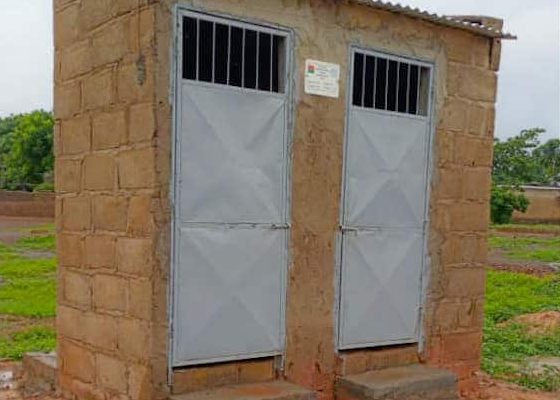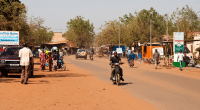The Burkina Faso Ministry of Water and Sanitation recently inaugurated 600 latrine blocks in the Boucle du Mouhoun region of Burkina Faso. The new facilities were built as part of the Water Supply and Sanitation Programme (PAEA), launched in 2019.
The sanitation facilities have been operational since September 1st, 2021. These are 600 latrine blocks built in the Boucle du Mouhoun, one of the 13 regions of Burkina Faso with approximately 1.9 million inhabitants. The VIP-shower-pit latrine blocks will benefit internally displaced people living in the Boucle du Mouhoun region.
“At least 2,000 other latrine blocks are under construction in the Boucle du Mouhoun region. Each installation costs about 350,000 CFA francs (more than 533 euros),” says the Burkina Faso Ministry of Water and Sanitation. The main challenge is to improve hygiene in the Boucle de Mouhoun. The project is part of the Water Supply and Sanitation Programme (PAEA), launched in 2019. “The regions of Hauts-Bassins, Cascades and South-West are also concerned by the sanitation component of this programme,” says the Burkinabe Ministry of Water and Sanitation. In all, 50,000 latrines will be built in rural areas. The PAEA also has a rural water component.
The World Bank is co-financing the work with an envelope of nearly 254 million euros, through the PforR (results-based programme) financing instrument. The Burkinabe government is providing the rest of the funding, i.e. more than 55,000 euros for the implementation of the PAEA, which should be completed in 2023. The aim is to improve sanitation services in the country.
Read Also – Urban sanitation, a major challenge for sustainable cities in Africa
According to the government of Burkina Faso, by 2020, the country’s access to sanitation was barely 25.3%. The PAEA aims to improve the situation, as the lack of adequate sanitation facilities increases the rate of open defecation. This faecal matter pollutes the waterways, resulting in the spread of waterborne diseases.
Inès Magoum







